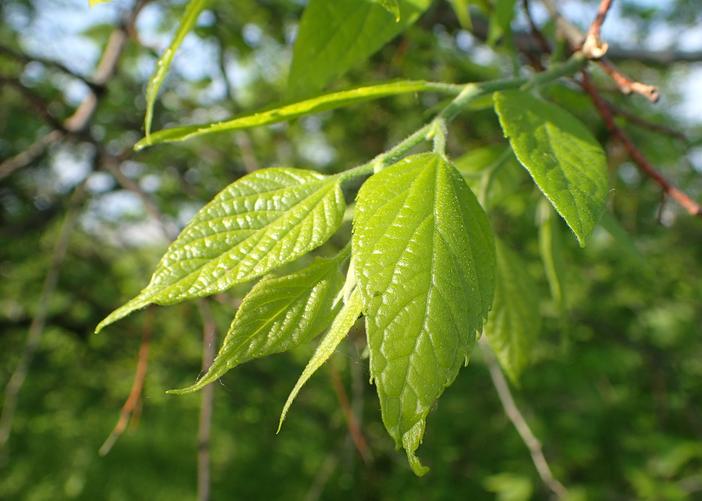Bunge’s Hackberry
(Celtis bungeana)
Bunge’s Hackberry (Celtis bungeana)
/
/

Krzysztof Ziarnek, Kenraiz
CC BY-SA 4.0
Image By:
Krzysztof Ziarnek, Kenraiz
Recorded By:
Copyright:
CC BY-SA 4.0
Copyright Notice:
Photo by: Krzysztof Ziarnek, Kenraiz | License Type: CC BY-SA 4.0 | License URL: https://creativecommons.org/licenses/by-sa/4.0 | Uploader: Kenraiz | Publisher: Wikipedia Commons









Estimated Native Range
Summary
Celtis bungeana, commonly known as Bunge’s Hackberry, is a deciduous tree native to a variety of habitats including forest margins, hillsides, and along streams in China and Korea. It can grow up to 49 feet (15 meters) tall and is characterized by its rounded crown and pale gray, warty bark. The small, inconspicuous greenish flowers bloom from April to May, followed by small, orange-red berries that ripen from October to November and are attractive to birds.
Bunge’s Hackberry is valued for its adaptability to urban environments, tolerance of drought, and resistance to air pollution, making it suitable for street plantings and landscape use. It thrives in full sun to part shade and prefers well-drained soils but can adapt to a wide range of soil types. This tree is also used for bonsai due to its interesting bark texture and form. While generally low-maintenance, it can be susceptible to witches’ broom disease, which causes abnormal brush-like clusters of twigs.CC BY-SA 4.0
Bunge’s Hackberry is valued for its adaptability to urban environments, tolerance of drought, and resistance to air pollution, making it suitable for street plantings and landscape use. It thrives in full sun to part shade and prefers well-drained soils but can adapt to a wide range of soil types. This tree is also used for bonsai due to its interesting bark texture and form. While generally low-maintenance, it can be susceptible to witches’ broom disease, which causes abnormal brush-like clusters of twigs.CC BY-SA 4.0
Plant Description
- Plant Type: Tree
- Height: 30-40 feet
- Width: 30-40 feet
- Growth Rate: Slow, Moderate
- Flower Color: N/A
- Flowering Season: Spring, Summer
- Leaf Retention: Deciduous
Growth Requirements
- Sun: Full Sun
- Water: Medium
- Drainage: Medium
Common Uses
Bird Garden, Low Maintenance
Natural Habitat
Forest margins, hillsides, and along streams in China and Korea
Other Names
Common Names: Bunge’s Hackberry, Desert Hackberry, Hei Dan Shu, Bunge’s Celtis
Scientific Names: , Celtis bungeana, Celtis amphibola, Celtis bungeana var. deqinensis, Celtis bungeana var. lanceolata, Celtis chinensis, Celtis davidiana, Celtis gongshanensis, Celtis mairei, Celtis sinensis
GBIF Accepted Name: